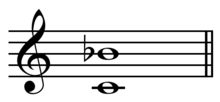A musical ratio of 16:9 or 9:5.

"In related scales there is no case in which a note serves for more than four major and three minor, or four minor and three major keys;1 but Mr. Taylor makes B with the number 495 serve for six major scales. Forming the scales as he did from the notes of C, instead of the proper progression of scales, makes all the notes of the scales of A, E, and B major a comma too low for the scales of F, C, G, and D; and likewise, all the notes of the scales of D, G, C, and F minor a comma to high for the scales of A, E, and B. All the minor sevenths are a comma too low for their tonic notes. But as D, G, C, and F are a comma to high, if the tonic notes were right these four sevenths would be right with their present numbers. The other three scales, A, E, and B, which begin on their proper numbers, have their sevenths a comma too low." [((Scientific Basis and Build of Music, page 14]
Hughes
ALTHOUGH only twelve notes of a keyed instrument develope perfect minor harmonics, there are fifteen different chords, the double tones D#-E?, E#-F?, A#-B? all sounding as roots. The fifteen roots are written in musical clef. A major and a minor fifth embrace the same number of key-notes, but the division into threefold chords is different. In counting the twelve, a major fifth has four below the third note of its harmony, and three above it; a minor fifth has three below the third note of its harmony, and four above it. A major seventh includes twelve key-notes, a minor seventh only eleven. As an example of the minor chords in the different keys, we may first examine those in the key of A, written in musical clef. The seven of its harmony have two threefold chords, and two of its ascending scale. If we include the octave note, the highest chord of the descending scale is a repetition (sounding an octave higher) of the lowest chord of the seven in its harmony, and the second chord of the descending scale is a repetition of the first chord of its ascending scale. These two repetition chords are only written to the key of A: the chords of the other eleven keys will all be found exactly to agree with those of A in their mode of development. We may again remark on the beautiful effect which would result if the colours of the minor chords could be seen, with the tones, as they develope. [Harmonies of Tones and Colours, Diagram XII - The Chords of the Twelve Minor Keys, page 37a]
In classical music from Western culture, a seventh is a musical interval encompassing seven staff positions (see Interval for more details), and the minor seventh is one of two commonly occurring sevenths. It is qualified as minor because it is the smaller of the two: the minor seventh spans ten semitones, the major seventh eleven. For example, the interval from A to G is a minor seventh, as the note G lies ten semitones above A, and there are seven staff positions from A to G. Diminished and augmented sevenths span the same number of staff positions, but consist of a different number of semitones (nine and twelve).
Minor seventh intervals are rarely featured in melodies (and especially in their openings) but occur more often than major sevenths. The best-known example, in part due to its frequent use in theory classes, is found between the first two words of the phrase "There's a place for us" in the song "Somewhere" in West Side Story. Another well-known exception occurs between the first two notes of the introduction to the main theme music from Star Trek: The Original Series theme.
The most common occurrence of the minor seventh is built on the root of the prevailing key's dominant triad, producing the all-important dominant seventh chord.
Consonance and dissonance are relative, depending on context, the minor seventh being defined as a dissonance requiring resolution to a consonance. Wikipedia, Minor Seventh
See Also
7.16 - Seventh
COMPOUND INTERETHERIC NEUTRAL CENTER SEVENTH SUBDIVISION
diminished seventh
Interval
Major Seventh
minor
Minor Second
Minor Third
Seventh
